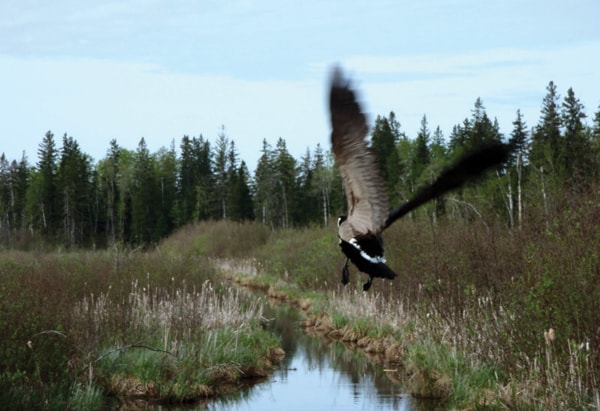WINNIPEG — Every fall, hundreds of thousands flock to Manitoba. They spend days sampling the local cuisine, dabbling in crowded provincial lakes and resting their weary bones.
You won’t see these travellers at the usual haunts. But if you are in the right place around dusk, you will see one of the reasons why Manitoba is considered a birder’s paradise in the fall.
The province is smack in the middle of the migration route for thousands of birds on their way south. After a day of feasting on farmers’ fields in September, ducks and geese land in favourite spots to spend the night. They are both a depressing and awe-inspiring sight — signalling the end of summer, darkening the sky and overwhelming the ear with a symphony of bird calls.
Manitoba takes in three migration corridors and experts have recorded almost 400 different species of bird — about two-thirds of the species in Canada. In the late summer, dozens of different species of shorebirds and song birds dominate the landscape before the geese and ducks take over.
Oak Hammock Marsh, a wetland north of Winnipeg near Stonewall, is one of their preferred stopping places. Visitors to the marsh in the fall can watch from a rooftop observation deck around dusk as thousands of geese fly into the marsh to spend the night.
“It is spectacular. There are no words to describe it adequately,” said Paula Grieef, resident naturalist with the marsh where Ducks Unlimited Canada has its headquarters. “The skies are black with geese coming in. It is a phenomenal experience.”
While much of Manitoba’s wetlands were drained in the 1800s, once they were rehabilitated, the birds returned.
“We are one of the best places for birds in North America because we have so many different habitats and we’re in the middle of the continent,” Grieef said. “So we get east birds and west birds. We get boreal forest (birds), we get prairie, we get wetland — we get all of that.
For the more cosmopolitan goose, Manitoba’s capital is the favoured stopover. FortWhyte Alive, a 260-hectare conservation area within the city, attracts its fair share of feathered guests. The conservation area holds “birding breakfasts” in the summer — guided birding tours that start at 7 a.m. — and then switches to geese flight observation evenings in the fall.
People can simply watch the nightly return of the birds or pay for “dinner and a show” — have a four-course meal at the conservation’s restaurant, go watch the geese landing, and then return for dessert.
Jody Watson, director of education at FortWhyte Alive, said the place attracts everyone from die-hard birders to parents with small children. Very few are unimpressed by the sight, she said.
“My dad, who grew up in rural Manitoba, has seen geese,” Watson said. “He said ‘I’ve seen geese. I really don’t need to go and see this.’ And he was jumping around like a little three-year-old. He couldn’t believe it.”
The province’s potential as a birding destination hasn’t escaped Manitoba’s tourism marketing board. Mark Clarke, manager of marketing development at Travel Manitoba, just returned from the world’s largest bird show in the United Kingdom where he was promoting the province.
The British birding market is valued at $2.3 billion a year and there are about 3,000 bird clubs in the U.K., Clarke said. That often fanatical interest in birds makes them very lucrative travellers.
“They will fly halfway around the globe, see the bird, check it off on their life list and then fly home again,” he said. “We certainly have some people here who are looking for a specific species.”
Manitoba is a good place to see the great grey owl, the American three-toed woodpecker, the spruce grouse, as well as several kinds of sparrows and warblers, Clarke said. The province has recently developed several trails — one crossing the border into the United States and the other through previously unreachable grasslands — that makes it much easier to observe different species of birds, he added.
